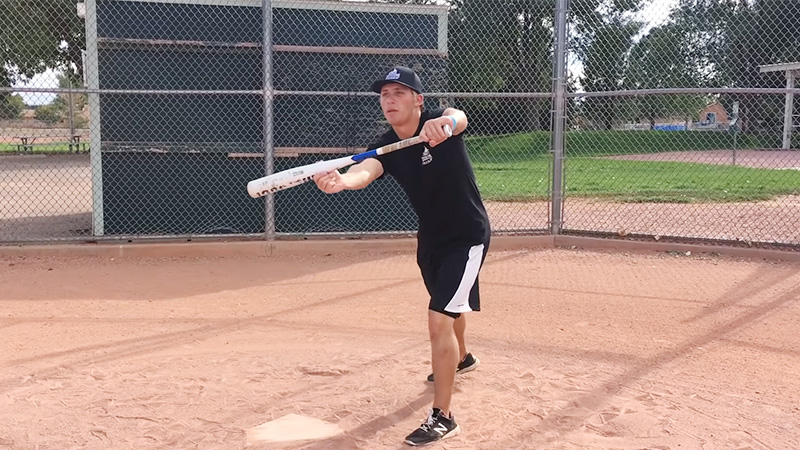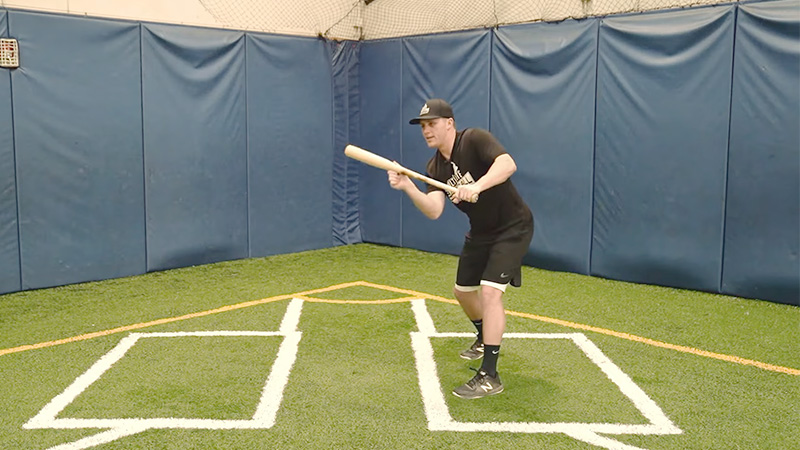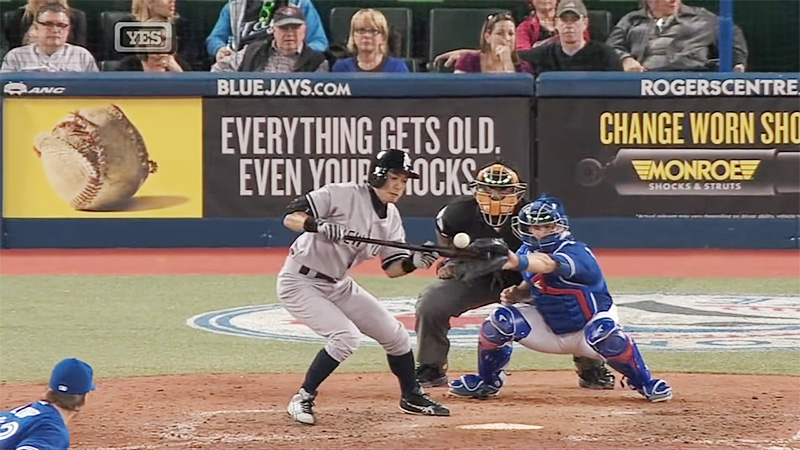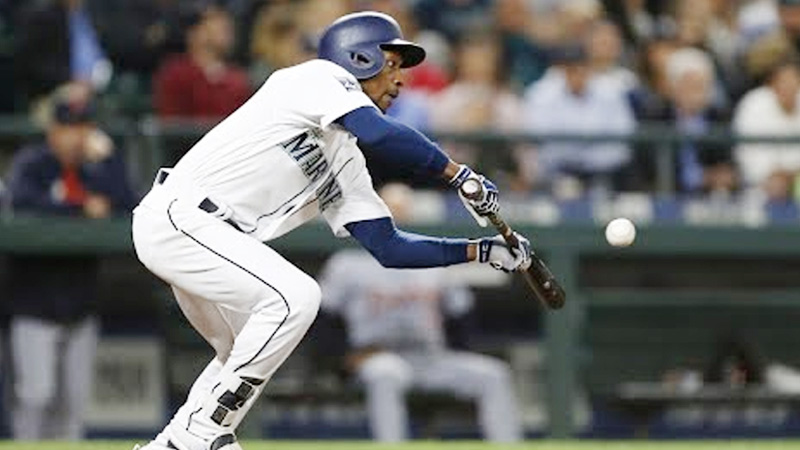A bunt in baseball is a very commonly used hitting technique that you will encounter so often in a match. But it is not a regular and simple hitting technique and that’s why spectators often fail to understand or anticipate the consequences of the bunts.
However, the technique of the bunt is used in different situations in a baseball match and it has some significant rules as well. Eventually, there are different types of bunts and the results are different as well.
If you have any confusion in understanding the entire fact, maybe you are on the right track. Today’s topic is Bunt and everything about it in the arena of baseball. So, keep reading without skipping anything to master the fact, the baseball bunt.
What is Bunt in Baseball?

Generally, a bunt is a very popular technique of batting in Baseball and Softball. People know about this technique mostly for its frequent use in Baseball.
Usually, it is an offensive hitting technique where the batter intentionally makes a very short, and soft hit to advance a base runner or to sacrifice themselves to move runners on base.
While defining Bunt in Baseball, according to Wikipedia, Official Baseball Rules says, “A BUNT is a batted ball not swung at, but intentionally met with the bat and tapped slowly within the infield.”
While trying for a bunt, the batter holds the bat in front of the plate and uses a quick motion to redirect the ball toward a specific area of the field. And mostly, it has to be towards the first or third baseman.
However, the purpose of a bunt can vary from batter to batter and it is depending on the situation in the game.
To ensure a successful bunt, a hitter needs a proper combination of skill and strategy. Still, bunting can be a risky play as a poorly executed bunt can result in an out or even a double play.
Why Do Players Need to Bunt in a Baseball Match?

Usually, a batter will have a variety of situations when he will need to unt the hit. If there are runners on base and the team has less than two outs, the hitter will need a bunt.
He should do it to advance the runners to a higher-scoring position. This is actually a special type of bunt which we call the sacrifice bunt.
Also, in situations where a team needs a run, like in a close game with limited scoring opportunities, the batter can attempt to bunt for the “small ball” strategy.
In this case, he needs to go for the bunts, steals, and other tactics so that he can put pressure on the defense and also get a chance to score.
When the defense is playing deep or the batter is particularly fast, a bunt can change the situation instantly. Also, when the opposing team’s pitcher dominates the match, the batter can bunt intentionally, just to disrupt their rhythm. It is a kind of negative technique to potentially force them into making an error or a bad pitch.
In the late innings of a close game, some hitters try a bunt to start a rally and put pressure on the defense. Also, a hitter can create his own technique where he utilizes a bunt to create some score opportunity or to distract the opposition.
According to the Baseball Rule Academy,
“A bunt is a fair ball in which the batter does not swing to hit the ball but holds the bat in the path of the ball to tap it slowly to the infield. If an attempt to bunt is a foul ball, it is treated the same as any other foul ball, except that if the attempt is by a batter who has two strikes, such batter is out as in 7-4-1e.”
Rule Explanation
According to the rule, a bunted ball will come to rest or be fielded in fair territory for it to be considered a fair ball. If the ball rolls or is fielded in foul territory, it will be considered a foul ball, and the batter receives a strike, unless they already have two strikes.
To make a bunt counted, the batter must make a deliberate and genuine attempt to strike the ball. Merely holding the bat in the bunting position without any intention to make contact will never be considered a bunt.
When a catcher interferes with the batter’s bunt attempt, the hitter will be awarded first base.
Also, when the hitter will try to make a bunt and contact with a pitched ball in the strike zone, and the ball is not fouled, it will be a strike. Bunting foul on two-strike count results in a strikeout.
Eventually, if a batter successfully bunts the ball into fair territory, a defensive player can field it to make a play. And when a bunt is fielded and thrown out of play, the batter and any runners on base will get two bases as an award.
Types of Bunt in Baseball
A bunt, for sure, is a very common batting technique, and as you just find out, batters use it in many different situations. However, according to the technique and consequences of the bunts in different situations, the professionals have categorized this technique into different types.
First, let me clarify one thing. I have specified 4 different types, some with several subtypes. And the fact is, some people consider those subtypes as specific types. So, make sure to check the details of each type so that you can be familiar with the subtypes.
1. Sacrifice bunt
This specific type is known as a sacrifice hit. In this case, the batter will advance runners on base at the cost of making an out. The purpose of this type of bunt is to bunt the ball softly.
As a result, the defense will have no choice but to throw the batter out at first base while letting the runners move up to a better scoring position.
Squeeze bunt is often considered a specific type of bunt though it falls under the category of the sacrifice bunt. It is a type where a base runner on third base begins running toward home plate as soon as the pitcher begins his delivery.
Some people also considered the safety squeeze another type though it is pretty much similar to the squeeze bunt. But here, the runner waits to see where the bunt goes before running toward home plate.
Suicide Squeeze is another type that BaseballBibile has categories as a separate type. However, in this type of bunt, the runner suddenly takes off for the home instantly after the pitcher delivers his pitch.
This type is named in such a way because the runner has no idea about the consequences of his bunt before. That’s why it is a very risky technique and you might see this type of bunt so often in the baseball ground.
2. Base Hit Bunt
This is a type of bunt where the batter tries to bunt the ball with enough speed and precision to reach base safely. Hitters mostly do it just to surprise the defense with a well-placed bunt that they are unable to field in time.
Here, if the runner advances and the batter is thrown out, that results in the official scorer judging that the batter’s intention was a base hit bunt, then the batter will not receive credit for a sacrifice bunt.
Sometimes, the batter waits until the last possible moment to show a bunt, and then quickly drops a soft bunt down the first or third base line and sprints towards first base. This is known as the drag bunt. Though some people consider it a separate type it is considered as a part of the base hit bunt.
3. Swinging Bunt
A swinging bunt usually hits with a swinging motion but travels only a short distance in front of home plate. Oftentimes, it causes bouncing multiple times before reaching the infielders.
Generally, this type of bunt is the consequence of a situation when the batter contacts a pitch that is low in the strike zone or has a lot of spins. And the pitch simply causes the ball to spin off the end of the bat and take an unpredictable path.
So, these are the types of bunt in baseball. Though the system is the same, these bunts are used in different situations. Eventually, the consequences of these bunts are different as well.
A Bunt for the Fielders
To field a bunt in baseball, players must need quick reflexes, agility, and also the ability to make an instant decision. When a batter attempts to bunt the ball, the fielder closest to the ball needs to react instantly to retrieve the ball and make a throw targeting the base.
The field first has to understand the situation and anticipate where the ball can reach. For that, he needs to pay attention to the batter’s stance, the infield and outfield positioning, and also the game situation.
When the bunt is in play, the fielder has to move quickly to the ball and pick it up cleanly. In such a situation, he needs to field the ball with soft hands and keep it in front of the body to prevent it from bouncing away.
After fielding the bunt, he will instantly assess the situation and decide where to make the throw. The player must decode considering the position of the base runners, the speed of the batter, and the game situation. He can simply choose to throw to first base for a force-out, second base for a double play, or third base so that the runner can’t advance.
FAQs
Q: Can a batter attempt to bunt with two strikes?
A: Yes, a batter can attempt to bunt with two strikes. But if he somehow fouls off the bunt, it counts as a strikeout. But this strikeout won’t be considered if a fielder catches the ball in the air before it touches the ground.
Q: Is there a limit to the number of bunts a hitter can go for?
A: No, there is no specific limit to the number of bunts a hitter can go for. But if he fails to bunt a pitched ball fair within the strike zone, he can simply accumulate strikes, which can result in a strikeout.
Q: Is a catcher allowed to interfere with a batter’s bunt attempt?
A: No, a catcher is not allowed to interfere with a batter’s attempt to bunt. If the catcher touches the bat or the batter before contact with the ball, the batter is awarded first base due to the catcher’s interference.
Q: Can a bunt result in a home run?
A: No, a bunt cannot result in a home run. To make a score for a home run, the batter must hit the ball over the outfield fence in fair territory without the aid of a fielder’s misplay.
Q: Can a fielder field a bunt and be thrown out of play?
A: Yes, if a fielder can field a bunt and subsequently be thrown out of play, like over a fence, or into a dugout, the batter. For his act, all the runners on base will get two bases from their positions at the time of the pitch as an award.
Wrapping Up
Understanding a bunt in baseball shouldn’t bother you if you are a serious baseball lover. But the rules and the effects of a bunt, can’t easily confuse anybody still if he is aware of the fact, a bunt very well.
I’ve tried my best to explain everything about the bunt briefly. Still, I can have faults and lackings. If you find anything here that can be a spot to improve my thought, please inform me. Though I am not a newbie, still, I am learning.
Also, share your thoughts on bunts and tell us which player is good at bunts from your point of view. Thank you for your support.








